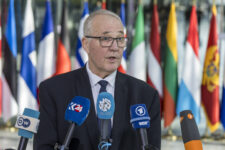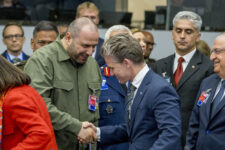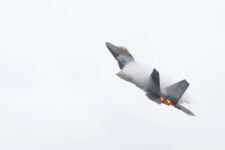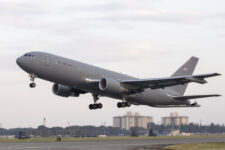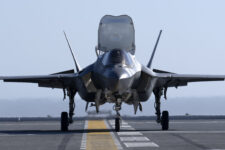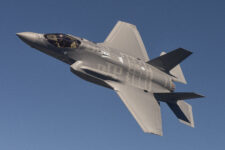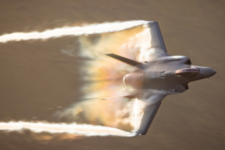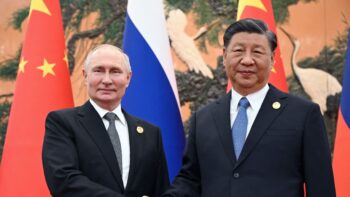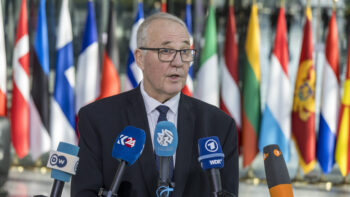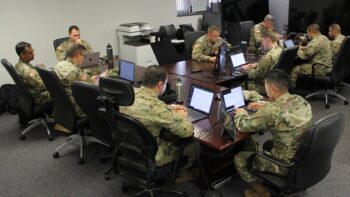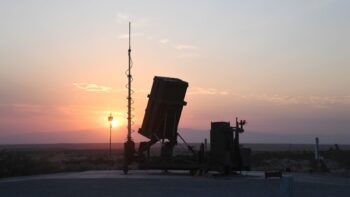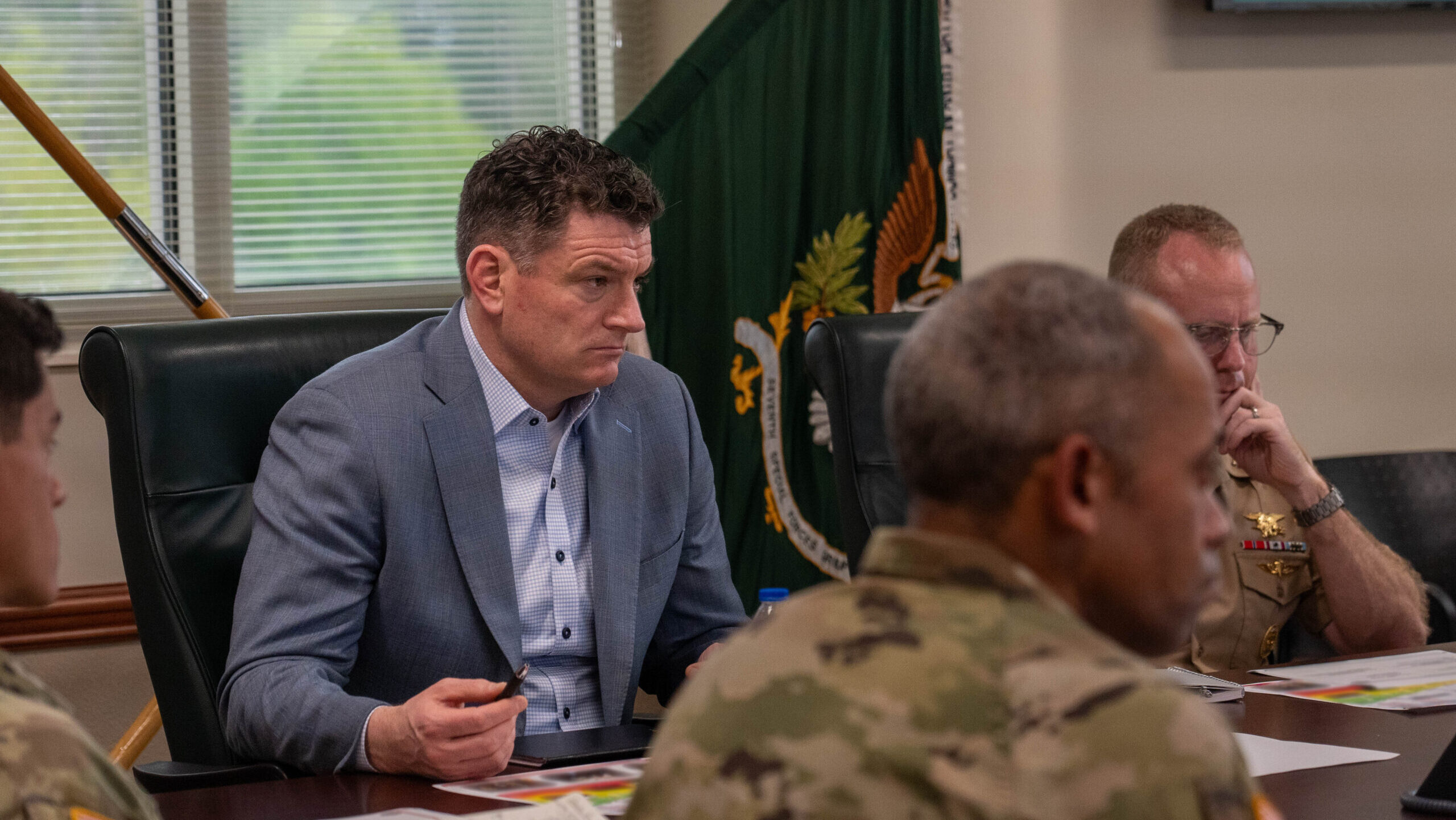
Christopher Maier, Assistant Secretary of Defense for Special Operations and Low-Intensity Conflict, meets with 1st Battalion, 7th Special Forces Group (Airborne) leadership on Camp “Bull” Simons, Florida, Feb. 28, 2024. (U.S. Army photos by Sgt. Taylor Zacherl)
WASHINGTON — US special operations forces are already a “big fan” of the Pentagon’s Replicator drone project, especially as the DoD imagines what a fight in the Pacific could look like, according to a senior official.
“First off, I think … it’ll field systems much more quickly than the standard defense industrial base process, procurement process,” Chris Maier, assistant secretary of defense for Special Operations and Low-Intensity Conflict, told the Defense Writers Group this morning.
“And so I think from the SOF [special operations forces] perspective, because we often are the ones able to do smaller projects, work them more quickly, test them with operators — in some cases actually [in an] operational context — then we can in some cases be proof of concept for the Replicator that then, if something works, can be scaled up much more quickly through Replicator than” through a traditional defense contractor.
Replicator, a major initiative by Deputy Secretary of Defense Kathleen Hicks unveiled a year ago, aims to crank out hundreds of unmanned platforms in record time, or as she put it, to deliver “capabilities at greater speed and scale while simultaneously burning down risk and alleviating systemic barriers across the department.” The first Replicator systems were delivered to servicemembers in April, Hicks previously said.
RELATED: Some Replicator tranche 2 systems have already been selected, DIU head says
Part of the impetus for the project, according to Hicks, was to prepare for a potential conflict with China by being able to bring considerable “mass” to any fight. Today, Maier echoed the value of such a strategy.
He said that as “students of the Ukraine conflict,” that fight has underscored that “mass matters … and the Replicator initiative really gets at that mass piece.”
Maier said that in a visit last week to US Indo-Pacific Command, leaders there, including conventional forces, talked about the “value that they see in Replicator in accelerating, catalyzing some of the efforts that probably otherwise wouldn’t move as quickly through our standard process, but also gives us the opportunity, I think … to fail fast.”
For SOF in the Indo-Pacific, Maier said such a program is going to be key because “it’s going to be about placement and access” to potentially contested areas.
“It’s going to be able to get [to] places in smaller numbers that are closer in than large military formations or platforms can be. And there it’s going to be really important to have the ability to draw on capabilities either we bring with us or we can quickly bring in,” he said. “And there, mass matters a lot. And you sure want to be sure the mass works at point of need as opposed to when you’re alone and afraid, so to speak, that the systems don’t work.”
Elsewhere in the talk Maier described SOF’s role in a potential conflict in the Indo-Pacific as one in which special operations elements support the joint force — whether by better informing convential forces commanders about conditions on the ground or leveraging relationships with local forces. That’s essentially the opposite, he said, of how the counter-terrorism fight that had dominated that last 20 years for the US military worked, in which case the joint force was largely working in support of special operations.
Maier’s praise comes just weeks after Hicks suggested that her signature initiative was progressing well with lawmakers’ support, but was suffering from congressional over-oversight.
“We’ve done nearly 40 Hill briefings since last October, averaging about one a week,” she said on Aug. 7. “That’s on an initiative that represents 0.059 percent of DoD’s budget. That depth of engagement isn’t scalable for Congress across the breadth of what we’re trying to accomplish.”
RELATED: Lawmakers, experts raise concerns over Pentagon’s ambitious Replicator drone initiative
Speaking more generally, she said, “If this country is going to transform its defense at the speed and scale we need, Congressional trust will need to substantially expand.”
